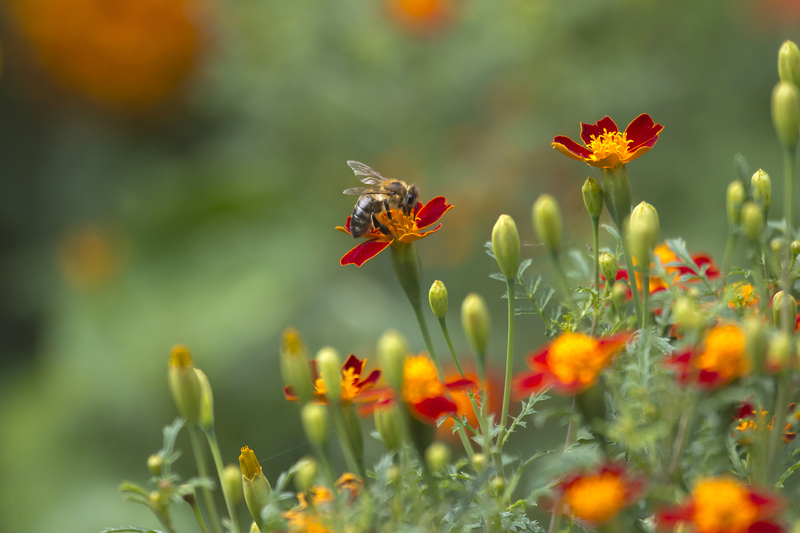Top Lawn Care Tips to Achieve the Perfect Yard for First-Timers
Are you dreaming of a lush, green, and picture-perfect yard but don't know where to start? Achieving the ideal lawn might seem overwhelming, especially for first-timers, but with the right guidance and essential tips, your lawn can become the pride of your neighborhood. Whether you're nurturing your first patch of grass or redesigning a neglected plot, this comprehensive guide will help you transform your yard with confidence.
Understanding Your Lawn: The First Step to Perfection
Before diving into top lawn care tips, it's crucial to understand your yard. Lawns are unique and depend on factors such as soil type, climate zone, grass variety, and sunlight exposure. As a first-time lawn owner, identifying these variables will help you make better decisions.
1. Know Your Grass Type
Not all grasses are the same. Some thrive in cool climates while others prefer warmth. Common varieties include:
- Kentucky Bluegrass: Popular for its lush, dense growth and cold tolerance.
- Bermuda Grass: Ideal for warm climates, drought-resistant, and durable.
- Fescue: Grows well in shaded areas, perfect for cooler temperatures.
- Zoysia: Tolerates both heat and some shade, very hardy.
Tip: Visit your local garden center or contact an extension service to identify your lawn's grass variety and its optimal growing conditions.
2. Test Your Soil
Healthy soil is the foundation of a perfect yard. Conducting a soil test will reveal nutrient levels and pH balance. Most grasses prefer a slightly acidic soil (pH 6 to 7). Test kits are available at garden stores or you can send a sample to a local lab.
- Add Lime to raise pH if your soil is too acidic.
- Add Sulfur to lower pH if your soil is too alkaline.
Balanced soil ensures that your grass can absorb water and nutrients efficiently.

Essential Lawn Care Tips for Beginners
3. Proper Mowing Practices
Regular mowing keeps your lawn looking neat and supports healthy growth. But improper mowing is one of the main reasons for unhealthy lawns, especially for first-timers.
- Never Mow Too Short: Cutting more than one-third of the grass blade at once weakens the plant.
- Keep Blades Sharp: Dull mower blades tear grass, making it susceptible to disease.
- Change Directions: Vary your mowing pattern to encourage upright growth and avoid ruts.
- Don't Mow When Wet: Wet grass clippings clump and clog your mower, causing uneven cuts and possible lawn diseases.
Pro Tip: Most cool-season grasses do best at 2.5-3.5 inches; warm-season varieties prefer 1-2 inches.
4. Watering Strategies: Deep and Infrequent
Watering your lawn sounds simple, but ineffective watering is a classic pitfall for beginners.
- Deep Soaking: Water deeply (about 1 inch per session) once or twice a week rather than daily, encouraging deep root growth.
- Morning Routine: Water early in the morning (before 10 a.m.) to minimize evaporation and reduce disease risks.
- Check for Runoff: Stop watering if you notice pooling; let water soak in before resuming.
Use a rain gauge or an empty tuna can to measure water output - when it collects an inch, your lawn has had enough.
5. Fertilizing for Success
Fertilizer gives your grass the nutrients it needs to thrive, especially if your soil test revealed deficiencies.
- Know the Right Time: Apply fertilizer in the growing season for your grass type (spring/fall for cool-season, late spring/summer for warm-season).
- Slow-Release Products: Use slow-release fertilizers to prevent nutrient runoff and burning.
- Follow Directions: Over-fertilizing can harm your lawn and the environment.
Tip: Organic options (like compost and manure) can supplement or replace chemical fertilizers for a more eco-friendly approach.
6. Weed Control Techniques
Nothing spoils a beautiful lawn more than weeds. First-timers should adopt a proactive approach:
- Thick Turf is Best Defense: Proper mowing, watering, and fertilizing make it difficult for weeds to take root.
- Hand-Pull Early Weeds: It's much easier to remove small weeds before they spread seeds.
- Use Pre-Emergent Herbicides: Apply these in early spring to prevent weed seeds from germinating.
Reminder: Always follow product instructions to avoid damaging your lawn.
Lawn Care Secrets for a Gorgeous Yard
While the basics will help you create a healthy lawn, some lesser-known secrets can push your yard into "envy of the block" territory.
7. Aerate Your Lawn Annually
Over time, soil becomes compacted, preventing air, water, and nutrients from reaching the roots. Aeration involves removing small plugs of soil using a core aerator.
- Best Time: Aerate during your lawn's growing season for maximum recovery.
- Frequency: Once a year is typically enough for residential lawns.
Aeration can dramatically improve root strength and resiliency.
8. Overseed Thin Lawns
If your grass looks sparse or patchy, overseeding can help. This is the process of spreading new seed over existing turf to thicken your lawn and crowd out weeds.
- Best Time: Early fall for cool-season grass, late spring for warm-season types.
- Prepare: Mow short, loosen soil with a rake, and spread seed evenly.
- Water: Keep the soil moist until seedlings are established.
9. Mulch for Moisture Retention and Nutrition
Don't bag all your grass clippings! Mulching them back into the lawn provides a natural source of nutrients, retains moisture, and cools the soil during hot periods.
Resources and Tools Every First-Timer Should Own
Investing in a few quality tools will make lawn maintenance much easier and your results more professional.
- Lawn Mower: Choose one suited for your lawn size (push, self-propelled, or riding).
- String Trimmer: For edging and hard-to-reach areas.
- Garden Rake: Essential for removing debris and prepping soil for seeding.
- Sprinkler or Hose: To ensure even watering.
- Soil Test Kit: Understand what your lawn really needs.
- Gloves: For comfort and safety during manual tasks.
Common Lawn Care Mistakes to Avoid
As a newcomer to lawn care, avoid these frequent missteps:
- Skipping Soil Tests: Guessing about nutrients and pH can lead to disappointing results.
- Overwatering: Drowns roots, encourages disease, and wastes resources.
- Neglecting Maintenance: Consistent, regular care is key. Don't let weeds or pests gain a foothold.
- Improper Fertilization: Too much or too little can be harmful. Always follow label instructions!
- Ignoring Your Lawn's Needs: Climate and grass type should guide every step you take.
Seasonal Lawn Care Schedule for Beginners
A year-round lawn care guide will keep your yard looking its best in every season:
Spring
- Test soil and amend if necessary.
- Apply pre-emergent weed control.
- Begin regular mowing as growth starts.
- Fertilize early in the season.
- Check irrigation systems for leaks and efficiency.
Summer
- Water deeply and less often.
- Raise mowing height to shade roots and conserve moisture.
- Spot-treat weeds and pests.
- Mulch clippings to return nutrients.
Fall
- Overseed thin areas if necessary.
- Aerate and fertilize.
- Continue mowing until growth stops.
- Rake leaves to avoid suffocating the grass.
Winter
- Avoid heavy traffic on dormant lawns.
- Sharpen and store mower blades for next season.
- Plan for spring improvements.
Pest and Disease Management for a Healthy Lawn
Insects, fungi, and other pests can wreak havoc on your yard if not properly managed.
- Monitor Regularly: Brown patches or thinning grass may signal pests or disease. Early detection is critical.
- Promote Healthy Growth: Strong, thick grass naturally resists most issues.
- Choose Low-Toxicity Solutions: Prefer organic or integrated pest management methods where possible.
If you're unsure, consult your local extension office with photos or samples for accurate diagnosis and treatment options.
Expert Tips to Maximize Lawn Curb Appeal
- Edge Along Driveways, Walkways, and Flower Beds: Gives a professional, finished look.
- Mix Up Grass Varieties: A blend can increase resilience and fill in bare spots.
- Add a Border of Color: Plant seasonal flowers or shrubs to frame your lush lawn for added visual impact.
- Install Outdoor Lighting: Showcase your yard and deter pests with tasteful lighting.

Conclusion: Lawn Care Success Starts with Knowledge and Consistency
Whether your goal is a relaxing oasis or an envy-inducing front yard, lawn care for first-timers doesn't have to be complicated. Understand your yard's unique needs, embrace a regular schedule, and adopt expert lawn care practices. By following these top lawn care tips, you'll not only achieve the perfect yard, but also build skills that will last a lifetime.
Remember: Every lush lawn was once a first-timer's project--your journey to perfection starts now!
Frequently Asked Questions (FAQ) - New Lawn Owner's Guide
- How often should I mow my lawn? Mow when your grass grows one-third taller than its optimal height. This could mean once per week during peak seasons.
- When is the best time to water? Early morning, before 10 a.m., to prevent evaporation and reduce disease risk.
- Can I overseed in summer? It's best to overseed in fall (for cool-season) or late spring (for warm-season) for better germination rates.
- Do I need to remove all clippings? No! Mulching some clippings provides nutrients and saves time.
- Why is my lawn yellowing? This could be from overwatering, nutrient deficiency, pests, or disease. Test your soil and assess recent care habits.
By following these expert lawn care tips and staying patient, you'll watch your yard transform from bland to beautiful--no matter your experience level!